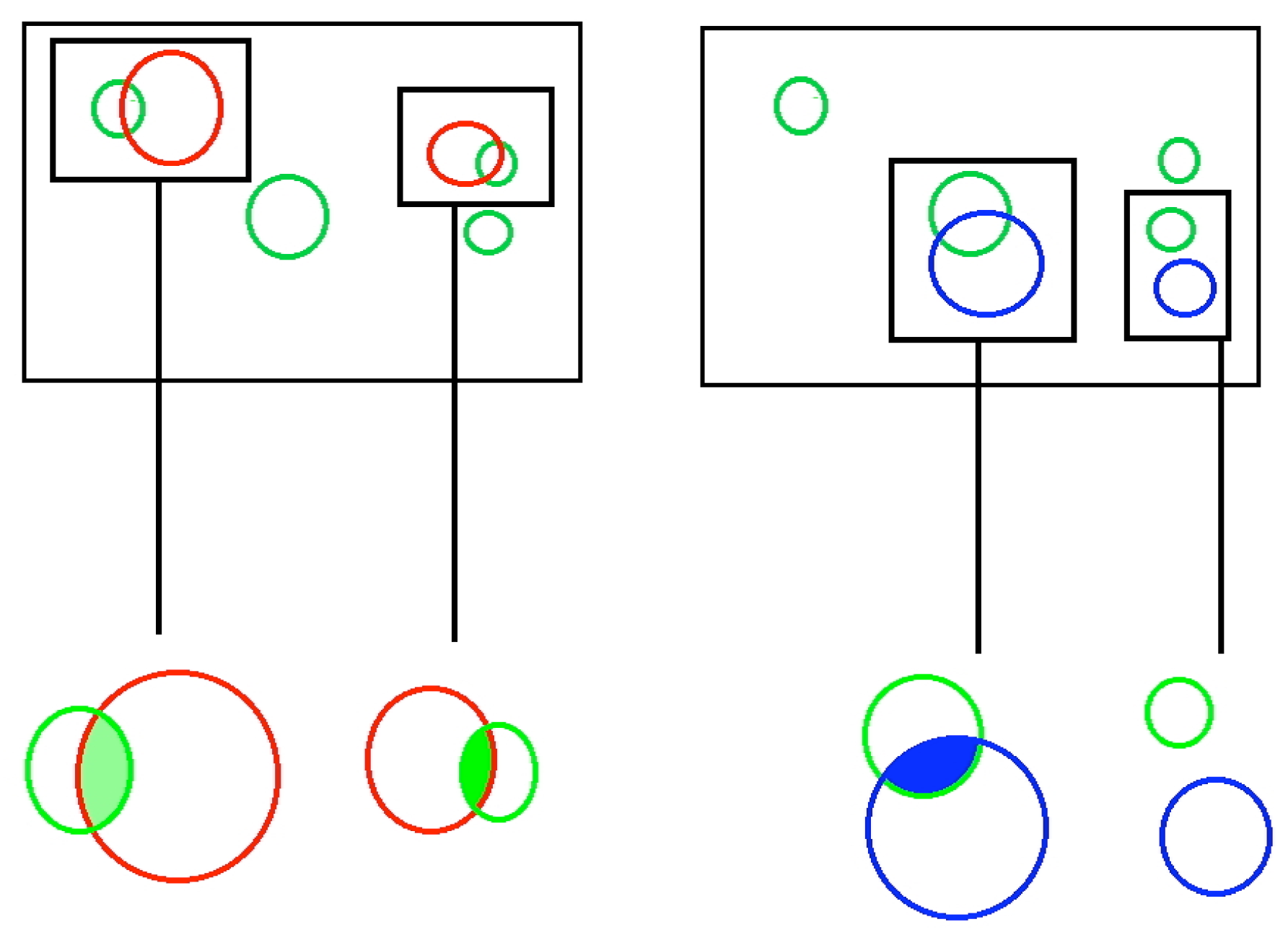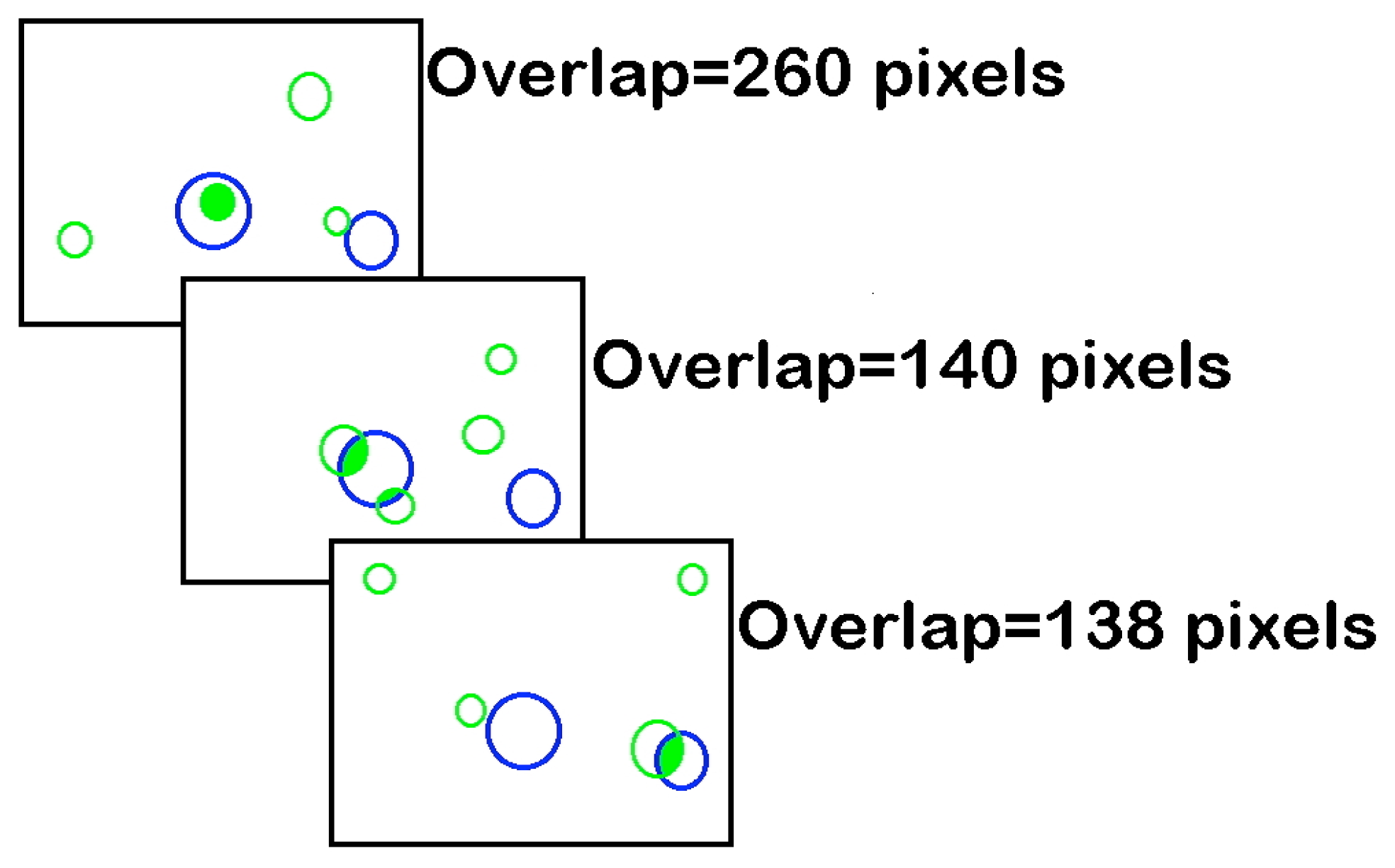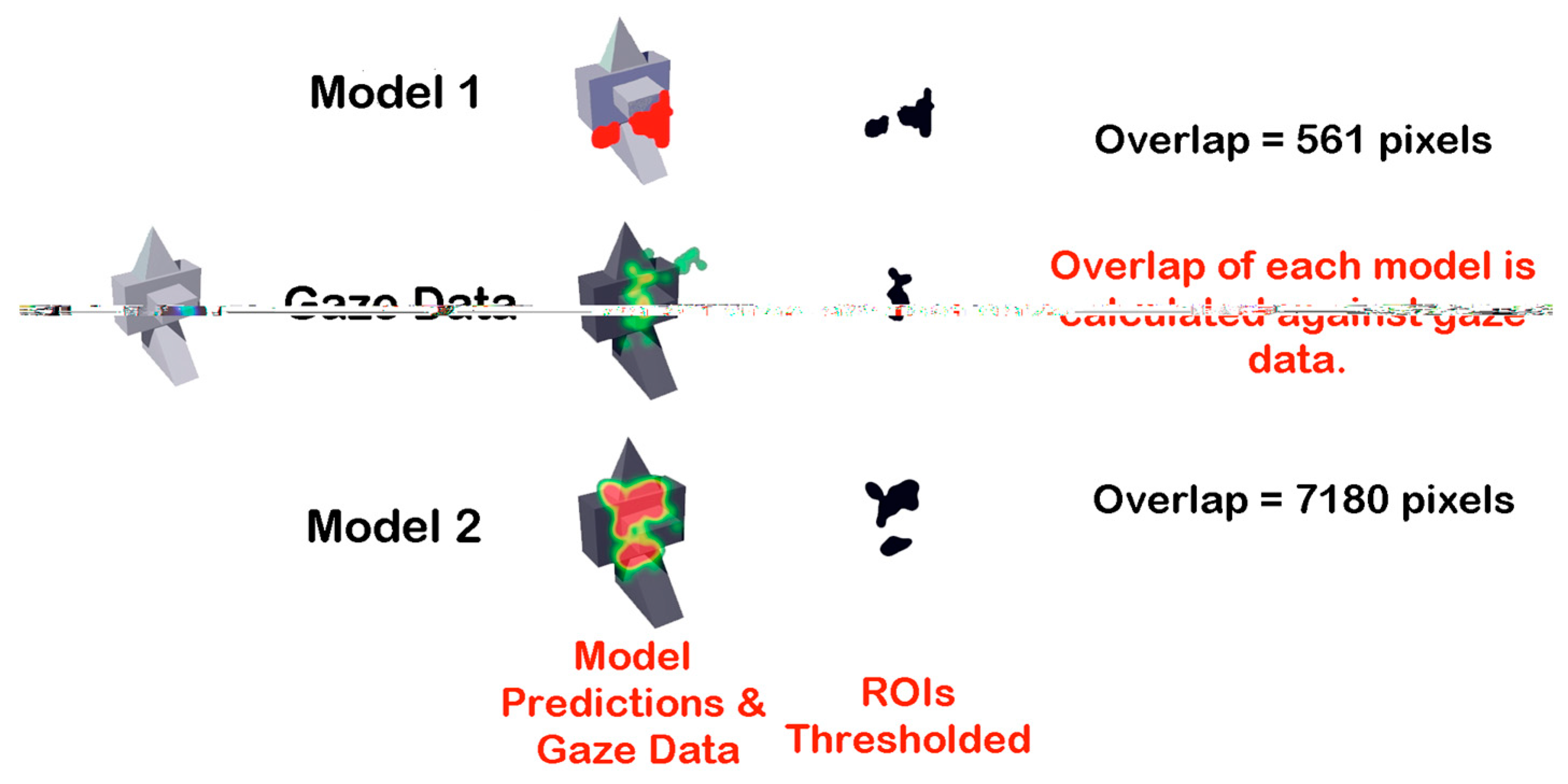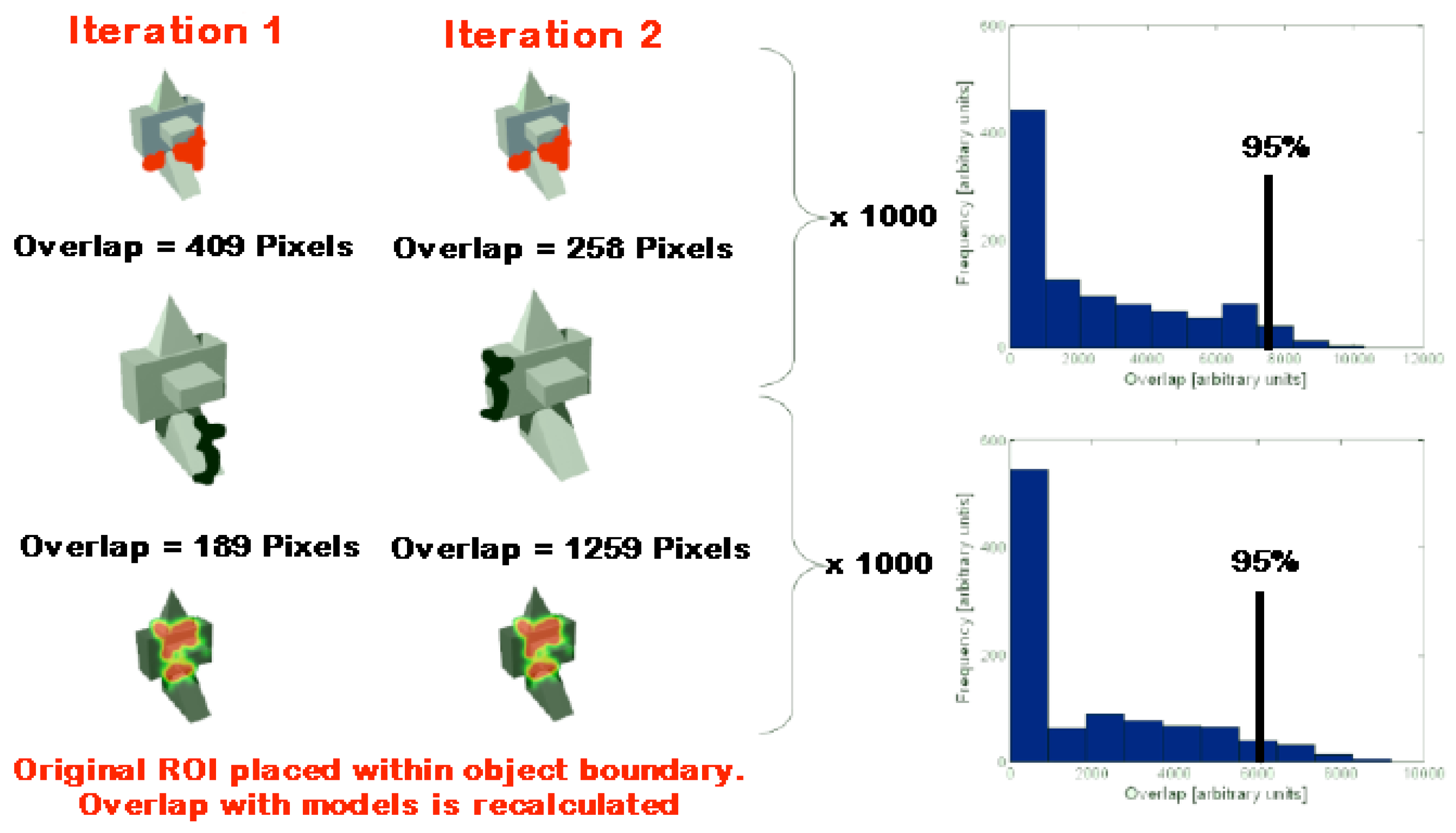Fixation Region Overlap: A Quantitative Method for the Analysis of Fixational Eye Movement Patterns
Abstract
Introduction
An Overview of the FROA Methodology
FROA – Implementation
Data Analysis
- Pre-processing of raw gaze data using a spatial and temporal filter to define ocular fixations.
- 2.
- The generation of global fixation region maps for each stimulus. This involves collapsing the filtered gaze data across observers by applying a 2-D Gaussian smoothing function.
- 3.
- Thresholding the region maps to produce a binary image encoding the maxima of fixation frequency or fixation duration for each stimulus.

- 4.
- The determination of pixel overlap between observed thresholded fixation region maps and the model under test.

- 5.
- Calculation of statistical significance of observed region overlap relative to the confidence intervals of the distribution of ‘random’ region overlap with the model.

FROA – An illustrative example: Analysing fixation patterns during object recognition

Data Acquisition


DISCUSSION
Additional Information
References
- Cohen, E. H., and M. Singh. 2007. Geometric determinants of shape segmentation: Tests using segment identification. Vision Research 47: 2825–2840. [Google Scholar] [CrossRef] [PubMed]
- Denisova, K., M. Singh, and E. Kowler. 2006. The role of part structure in the perceptual localization of a shape. Perception 35: 1073–1087. [Google Scholar] [PubMed]
- Foulsham, T., and G. Underwood. 2008. What can saliency models predict about eye movements? Spatial and sequential aspects of fixations during encoding and recognition. Journal of Vision 8: 1–17. [Google Scholar] [CrossRef] [PubMed]
- He, P., and E. Kowler. 1989. The role of location probability in the programming of saccades: Implications for ‘centre of gravity’ tendencies. Vision Research 9: 1165–1181. [Google Scholar] [CrossRef] [PubMed]
- Henderson, J. M. 1993. Eye movement control during visual object processing: Effects of initial fixation position and semantic constraint. Canadian Journal of Expermental Psychology 47: 79–98. [Google Scholar] [CrossRef] [PubMed]
- Itti, L., and C. Koch. 2000. A saliency-based search methanism for overt and covert shifts of visual attention. Vision Research 40: 1489–1506. [Google Scholar] [PubMed]
- Itti, L., C. Koch, and E. Neibur. 1998. A model of saliency-based visual attention for rapid scene analysis. IEEE Transactions on Pattern Analysis and Machine Intelligence 20: 1254–1259. [Google Scholar]
- Johnston, S., and E. C. Leek. 2008. Fixation region overlap analysis (FROA): A data driven approach to hypothesis testing using eye gaze fixation data. Poster presented at 8th Annual Meeting of the Vision Sciences Society, Naples, Florida. [Google Scholar]
- Leek, E. C., and S. Johnston. 2008. Fixation locations during three-dimensional object recognition are predicted by image segmentation points at concave surface intersections. Platform Talk at the 8th Annual Meeting of the Vision Sciences Society, Naples, Florida. [Google Scholar]
- Mannan, S., K. H. Ruddock, and D. S. Wooding. 1995. Cognitive determinants of fixation location during picture viewing. Journal of Experimental Psychology: Human Perception and Performance 4: 565–572. [Google Scholar]
- Mannan, S. K., K. H. Ruddock, and D. S. Wooding. 1997. Fixation patterns made during brief examination of two-dimensional images. Perception 26: 1059–1072. [Google Scholar] [CrossRef] [PubMed]
- Manor, B. R., and E. Gordon. 2003. Defining the temporal threshold for ocular fixation in free-viewing visuo-cognitive tasks. Journal of Neuroscience Methods 128: 85–93. [Google Scholar] [CrossRef] [PubMed]
- Mooney, C. Z. 1997. Monte Carlo Simulation (Sage University series on Quantitative Applications in the Social Sciences, 07-116). Thousand Oaks, CA: Sage. [Google Scholar]
- Parkhurst, D. J., and E. Niebur. 2003. Scene content selected by active vision. Spatial Vision 16, 2: 125–154. [Google Scholar] [CrossRef] [PubMed]
- Privitera, C. M., and L. W. Stark. 2000. Algorithms for Defining Visual Regions-of-Interest: Comparison with Eye Fixations. IEEE Transactions on Pattern Analysis & Machine Intelligence 22, 9: 970–982. [Google Scholar]
- Rajashekar, U., I. van der Linde, A. C. Bovik, and L. K. Cormack. 2007. Foveated analysis of image features at fixations. Vision Research 47: 3160–3172. [Google Scholar] [PubMed]
- Raynor, K. 1998. Eye movements in reading and information processing. Psychological Bulletin 124: 372–422. [Google Scholar]
- Renninger, L. W., P. Verghese, and J. Coughlan. 2007. Where to look next? Eye movements reduce local uncertainty. Journal of Vision 7, 3: 6. [Google Scholar] [PubMed]
- Sukumar, S., D. Page, A. Gribok, A. Koschan, and M. Abidi. 2006. Shape measure for identifying perceptually informative parts of 3D objects. Proceedings of the Third International Symposium on 3D Data Processing, Visualization, and Transmission, 679–686. [Google Scholar]
- Underwood, G., T. Foulsham, E. van Loon, L. Humphreys, and J. Bloyce. 2006. Eye movements during scene inspection: A test of the visual saliency hypothesis. European Journal of Cognitive Psychology 18, 3: 321–342. [Google Scholar] [CrossRef]
- Walther, D., and C. Koch. 2006. Modeling attention to salient proto-objects. Neural Networks 19: 1395–1407. [Google Scholar] [PubMed]
- Whitaker, D., P. V. McGraw, I. Pacey, and B. T. Barret. 1996. Centroid analysis predicts visual localization of first-and second-order stimuli. Vision Research 36: 2957–2970. [Google Scholar] [PubMed]
© 2009 by the author. 2009 Stephen J. Johnston, E. Charles Leek
Share and Cite
Johnston, S.J.; Leek, E.C. Fixation Region Overlap: A Quantitative Method for the Analysis of Fixational Eye Movement Patterns. J. Eye Mov. Res. 2007, 1, 1-12. https://doi.org/10.16910/jemr.1.3.5
Johnston SJ, Leek EC. Fixation Region Overlap: A Quantitative Method for the Analysis of Fixational Eye Movement Patterns. Journal of Eye Movement Research. 2007; 1(3):1-12. https://doi.org/10.16910/jemr.1.3.5
Chicago/Turabian StyleJohnston, Stephen J., and E. Charles Leek. 2007. "Fixation Region Overlap: A Quantitative Method for the Analysis of Fixational Eye Movement Patterns" Journal of Eye Movement Research 1, no. 3: 1-12. https://doi.org/10.16910/jemr.1.3.5
APA StyleJohnston, S. J., & Leek, E. C. (2007). Fixation Region Overlap: A Quantitative Method for the Analysis of Fixational Eye Movement Patterns. Journal of Eye Movement Research, 1(3), 1-12. https://doi.org/10.16910/jemr.1.3.5


